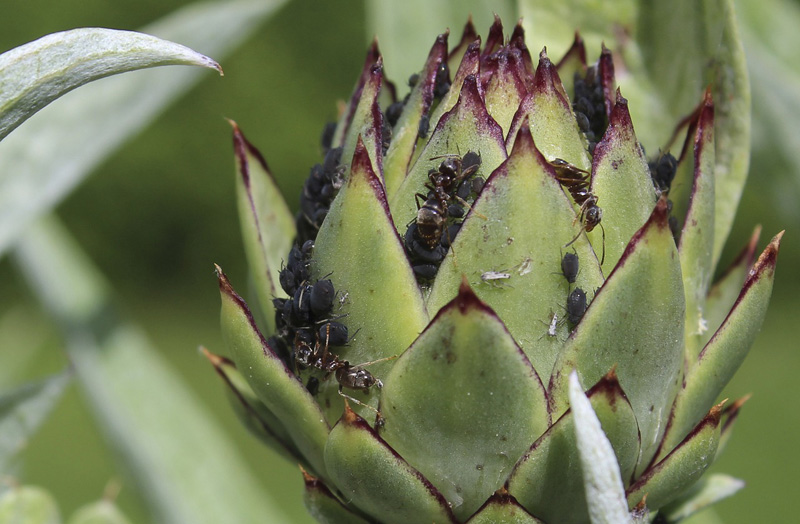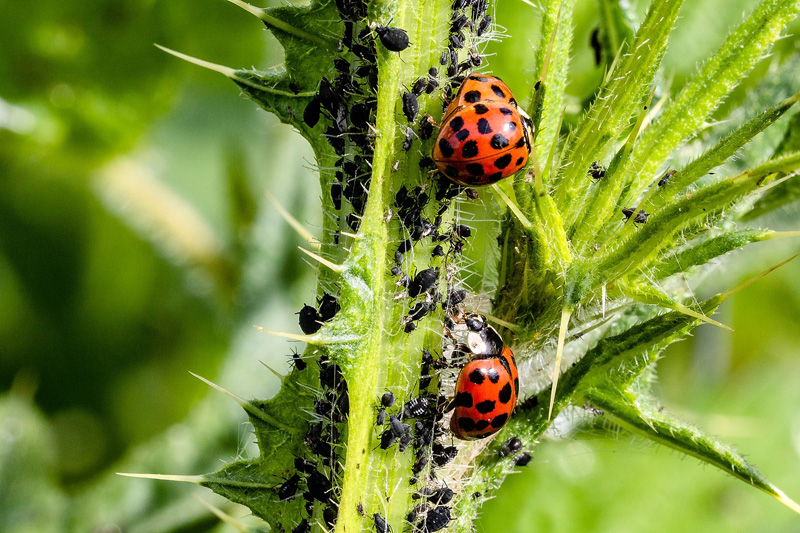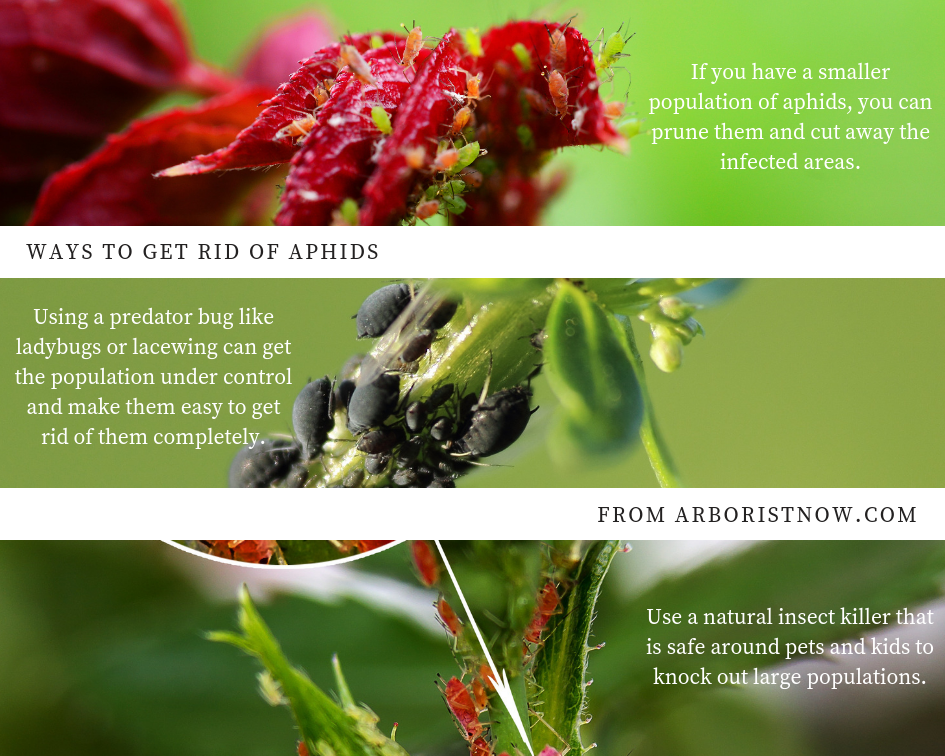Pest of the Month: Aphids
What are Aphids?
Aphids are small, soft-bodied insects that measure about 1/8 inch in length. These pear-shaped pests vary in color depending on their species and diet, appearing in shades of green, black, red, brown, yellow, or even white. They are typically wingless, but when populations grow excessively, some aphids develop wings to migrate to new plants.
Identifying Aphids:
- Physical Features: Aphids have whip-like antennae and a pair of tube-like structures called cornicles protruding from their back.
- Secretions: When feeding, aphids excrete a sticky fluid known as honeydew, which attracts ants and promotes sooty mold growth on plants.
- Behavior: Aphids multiply rapidly via asexual reproduction. Female aphids give birth to live nymphs without male involvement, allowing populations to explode in a short time.
Fun Fact: Aphids are sometimes called greenflies or blackflies, even though their colors can vary widely.
How Do Aphids Damage Your Trees?
The damage aphids cause ranges from minor cosmetic issues to significant harm that can compromise plant health and yield. Here’s how these pests can negatively impact your trees and garden:

Common Damage:
- Honeydew and Sooty Mold: Aphids excrete honeydew in large quantities, which encourages the growth of black sooty mold on leaves, branches, cars, or furniture below infested plants.
- Leaf Yellowing and Stunted Growth: A high concentration of aphids can cause leaves to yellow, curl, or drop prematurely, and shoots may become stunted.
- Toxins and Galls: Some species inject toxins into plants, distorting growth or creating abnormal gall formations on leaves or stems.
- Virus Transmission: Aphids can transmit plant viruses , particularly in vegetables like melons, cucumbers, and squash, leading to yellowing, mottling, and reduced crop yields.
Specific Examples of Aphid Damage:
- Lettuce Root Aphid s: Attack lettuce roots in spring, causing wilting and plant death.
- Woolly Apple Aphids: Infest apple tree roots and limbs, particularly near pruning wounds, weakening the tree over time.
- Carrot Aphids: Weaken carrot tops, causing them to tear off during harvesting.
Aphids can infest various trees, vegetables, and ornamental plants, making them one of the most versatile yet destructive pests.
How to Get Rid of Aphids?
Successfully managing aphids requires a strategic approach tailored to the size and severity of the infestation. Here are the most effective methods:

1. Pruning and Manual Removal
For small infestations, simply pruning infested areas or washing the pests off with a strong stream of water can control their spread. Regular monitoring is key to ensuring the population doesn’t rebound.
2. Natural Predators
Encourage or introduce beneficial insects like ladybugs and lacewings, which feed on aphids. These natural predators work best for light to moderate infestations and are an eco-friendly solution.
3. Natural Pesticides
For larger populations, apply least-toxic, natural pesticides such as insecticidal soaps or neem oil . These solutions are effective while being safe for kids, pets, and other non-target species.
4. Diatomaceous Earth Powder
This non-toxic powder damages the outer shell of aphids, dehydrating and killing them. It’s a safe option for homes with pets or children.
5. Preventative Measures
- Plant companion species like garlic or chives, which can repel aphids.
- Keep your plants healthy through regular watering and fertilization, as stressed plants are more susceptible to infestations.

Final Thoughts on Aphids
Aphids are a common but manageable garden pest. By identifying them early and taking the appropriate steps to control their population, you can protect your trees and plants from lasting damage. Whether it’s introducing natural predators, pruning affected areas, or applying safe pesticides, you have plenty of options to tackle an infestation.
Need Professional Help?
If you’re struggling to manage aphids or other pests, Arborist Now is here to help! Contact us today for expert advice and solutions tailored to your garden and landscaping needs.
What’s Your Experience With Aphids?
We’d love to hear how you’ve managed aphid infestations in your garden. Share your tips and success stories in the comments below!
Originally posted on September 28, 2018
We may receive affiliate compensation for some of the links below at no cost to you if you decide to make a purchase.



